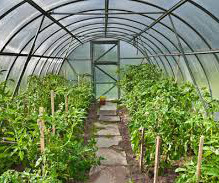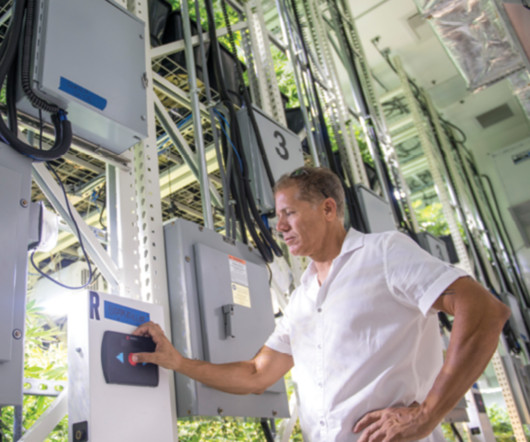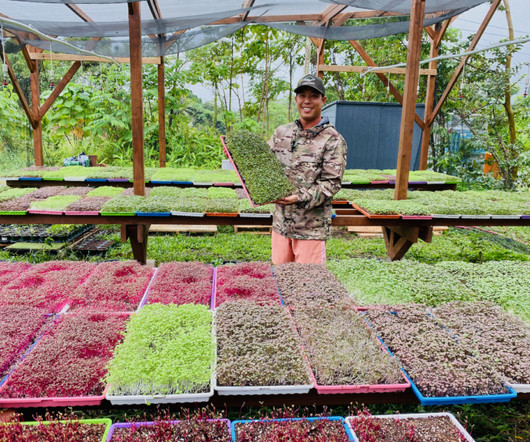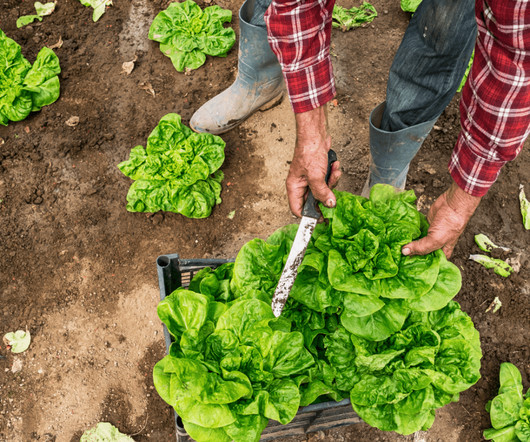Controlled Environment Agriculture (CEA)
Agric4profits
OCTOBER 16, 2024
Controlled Environment Agriculture (CEA) is a method of cultivating plants in a fully regulated environment. It is also known as ‘vertical farming or indoor f

Agric4profits
OCTOBER 16, 2024
Controlled Environment Agriculture (CEA) is a method of cultivating plants in a fully regulated environment. It is also known as ‘vertical farming or indoor f

Agritecture Blog
JUNE 7, 2023
Urban Greens is a vertical farming facility located in Sydney, Australia. Written by: Niko Simos June 7, 2023 In the ever-evolving landscape of Oceania, characterized by rapid urbanization , a new wave of innovation is poised to revolutionize the way we cultivate and access fresh produce. Stacked Farm Credit: Green Magazine.
This site is protected by reCAPTCHA and the Google Privacy Policy and Terms of Service apply.

Agritecture Blog
SEPTEMBER 23, 2022
With over 20 years of experience, Biernacki has a wealth of knowledge on growing and vertical farming. Now, Kevin uses his expertise to help other growers in his new role with vertical farming solutions provider Montel. The Grove focuses on providing natural, vertically farmed cannabis products. Why Montel?

Agritecture Blog
SEPTEMBER 13, 2023
Written by: Djavid Amidi-Abraham September 13, 2023 Controlled environment agriculture (CEA) is a rapidly growing segment of the farming industry. Many investments come from venture capitalists who want to treat vertical farming like a tech investment. Is it worth building or is it worth looking at off-the-shelf options?”

Modern Farmer
JANUARY 15, 2024
Recently, these unassuming spaces are cultivating a new trend in home-grown businesses. Armed with little more than ingenuity and entrepreneurial drive, microgreen growers are transforming the unused corners of their dwellings into profitable farming operations. Kupu is Hawaiian for sprout; the property is located on Kupu Place.)

Agritecture Blog
MARCH 1, 2023
While it is true that much of the equipment that field farmers use on a daily basis is petroleum based and produces carbon dioxide in the neighborhood of 22 lbs of CO2 per gallon of fuel burned, it must be considered that this equipment is often serving hundreds, if not thousands, of cultivation acres. of the American Farmland Trust.

Agritecture Blog
AUGUST 2, 2023
The Singapore Food Agency reveals that over 90% of the nation's food is imported, making it highly dependent on external sources, and only approximately 1% of Singapore's land is dedicated to agriculture. However, in the face of these limitations, Singapore has and will embrace more urban and vertical farming.
Let's personalize your content